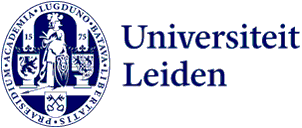956 search results for “animal” in the Public website
-
Lab facilities Comparative Psychology and Affective Neuroscience
We study expressions of emotion and social decision making across species.
-
Putting dental calculus under the microscope
Doctoral Thesis
-
Development of personalized health monitoring using ultra-weak photon emission based on systems medicine concepts
Promotor: Jan van der Greef; Co-promotors: Mei Wang; Eduard van Wijk
-
The innate immune response against mycobacterial infection: analysis by a combination of light and electron microscopy
Promotores: Prof.dr. H.P. Spaink & Prof.dr. P.C.W. Hogendoorn, Co-promotor: Dr. M.J.M. Schaaf
-
The noise of the hunt: effects of noise on predator-prey relationships in a marine ecosystem
The effects of anthropogenic noise on interactions between predators and their prey are still little understood.
-
Before Temples
A study on the utilisation of Iron Age rectangular structures and related depositional practices in the Low Countries
-
Social Anxiety and Specific Phobia in youth
Welcome to the Social Anxiety and Specific Phobia (SASP) Research Group!
-
Welfare and Inequality in Marketizing East Asia
Provides a cutting-edge comparative political economy analysis of welfare and inequality across ten East Asian countries.
-
Pursuing Whiteness in the Colonies: Private Memories from the Congo Freestate and German East Africa (1884–1914)
Pursuing Whiteness in the Colonies offers a new comprehension of colonial history from below by taking remnants of individual agencies from a whiteness studies perspective. It highlights the experiences and perceptions of colonisers and how they portrayed and re-interpreted their identities in Afric…
-
Convergent molecular evolution of toxins in the venom of advanced snakes (Colubroidea)
The explosive radiation and diversification of the advanced snakes (superfamily Colubroidea) was associated with changes in all aspects of the shared venom system. Morphological changes included the partitioning of the mixed ancestral glands into two discrete glands devoted for production of venom ormucous…
-
CurveBend
CurveBend project aims to study the restauration of biodiversity in livestock landscapes through collective action, practical solutions, and research on ecological knowledge co-creation.
-
Nanomaterial safety for microbially-colonized hosts: Microbiota-mediated physisorption interactions and particle-specific toxicity
The external tissues of plants and animals are colonized by microbial communities termed microbiota. When organisms are exposed to environmental pollutants, these substances will therefore encounter microbiota at the exposure interface.
-
A₃ adenosine receptor allosteric modulator induces an anti-inflammatory effect: in vivo studies and molecular mechanism of action
Source: Mediators Inflamm (2014)
-
‘Being a slave’ Indian ocean slavery in local context
What did it mean to be enslaved in in the Indian Ocean world in the 18th and 19th centuries? Over the last decades, historians have mined French, British, Portuguese and Dutch records for quantitative data on the European slave trade. This project focuses on the experience of being a slave and seeks…
-
Emblems and the Natural World
The multiple connections between emblematics and Natural History in the broader perspective of their underlying artistic, literary, political and religious ideologies.
-
The Function of Toll-like receptor 2 in Infection and Inflammation
The function of TLRs in innate immunity has aroused worldwide attention soon after its discovery. Because of the broad functions of TLR2 in innate immunity, the drive for the development of TLR2-targeted vaccines or therapeutic treatments has accelerated in the last decades.
-
Biophysical feedbacks between seagrasses and hydrodynamics in relation to grazing, water quality and spatial heterogeneity
Consequences for sediment stability and seston trapping
-
Digging for data: the rise and fall of a Miocene mammal biodiversity hotspot in the Vallès-Penedès (Catalonia, Spain)
The Vallesian, 11.1-9 Ma, was a special time in the Vallès-Penedes basin near Barcelona, where a biodiversity hotspot existed. Europe had a subtropical climate, with rhinos, forest giraffes, lions, hyenas, flying squirrels and primates.
-
Evaluation of the zebrafish embryo as an alternative model for hepatotoxicity testing
Promotor: Prof.dr. B. van de Water, Co-promotores: L.T.M. van der Ven, A.S. Kienhuis
-
The use of computational toxicology in hazard assessment of engineered nanomaterials
Assessing the risks of engineered nanomaterials (ENMs) solely on the basis of experimental assays is time-consuming, resource intensive, and constrained by ethical considerations (such as the principles of the 3Rs of animal testing). The adoption of computational toxicology in this field is a high p…
-
MycobacteriumXL: The intracellular fate of pathogenic mycobacteria
How do mycobacteria subvert the defenses of host immune cells?
-
In vitro and in vivo evaluation of synergistic and opposing effects of Chinese herbal medicine and natural compounds on immuno-modulation.
Can we link multiple components from herbal extracts with their biological activities?
-
Towards a mechanistic understanding of nanoparticle behavior using zebrafish
The work described in this dissertation contributes to a better mechanistic understanding of nanoparticles in vivo. To achieve that goal, we used the zebrafish as a highly predictive pre-screening model of nanoparticles.
-
Inspirational practices in cultural heritage management: fostering social responsibility
This catalogue is the result of the EU_CUL project (2018-2021), which explores the use of cultural heritage in Europe for fostering academic teaching and social responsibility in higher education.
-
Microengineered Human Blood Vessels For Next Generation Drug Discovery
Heart failure is a major health care problem with high mortality.
-
Environmental Humanities in the New Himalayas: Symbiotic Indigeneity, Commoning, Sustainability
Environmental Humanities in the New Himalayas: Symbiotic Indigeneity, Commoning, Sustainability showcases how the eco-geological creativity of the earth is integrally woven into the landforms, cultures, and cosmovisions of modern Himalayan communities.
-
Fungi of the greening Arctic: compositional and functional shifts in response to climatic changes
Promotor: E.F. Smets Co-promotor: J. Geml
-
Zebrafish embryos and larvae as a complementary model for behavioural research
Promotor: Prof.dr. M.K. Richardson
-
Orchid mycorrhizal interactions: evolutionary trajectories and ecological variations
The mycorrhizal symbiosis is among the most widespread species interactions on Earth. This thesis focuses on orchid mycorrhiza, a unique mycorrhizal type that has caught scientists’ attention for centuries.
-
Chitin in the fungal cell wall: towards valorization of spent biomass of Aspergillus niger
Aspergillus niger is an important industrial producer of organic acids and enzymes producing large amounts of spent fungal biomass.
-
Collaborations
Ecotox is located in an ambitious surrounding at the Leiden University. It is an initiative of both institutes Institute of Environmental Sciences (CML) and Institute of Biology Leiden (IBL).
-
Küçük Asya'nın Tarihönces
Karmaşık Avcı-Toplayıcılardan Erken Kentsel Toplumlara
-
Targeting lipid metabolism to develop host-directed therapeutics for mycobacterial infections
Our research aims to develop drugs that boost the host immune response to better defend us against mycobacteria.
-
Clock disruption in diurnal versus nocturnal migrating fish
Does Artifical Light at Night (ALAN) disrupt seasonal physiological and behavioral patterns in migrating freshwater fish?
-
Do common antibiotic treatments influence emotional processing?
People who have taken antibiotics in the past three months pay more attention to negative facial expressions, according to research by postdoc Katerina Johnson and assistant professor Laura Steenbergen. This may explain how antibiotics increase the risk of developing depression.
-
The effects of burying beetle social behaviours on interspecific interactions
This ecological community has long been known to affect host biology, and their diverse roles have been further clarified in recent years following numerous studies of animal:microbiota interactions in diverse systems.
-
Temminck's Order. Debates on Zoological Classification: 1800-1850
“Temminck’s Order” is the scientific biography of Coenraad Jacob Temminck (1778–1850), a Dutch naturalist and the first director of ’s Rijks Museum van Natuurlijke Historie in Leiden.
-
Metabolic signatures in nutrition and health: short-term diet response, sexual dimorphism and hormone chronobiology
The power of personalized nutrition lies in being able to conduct clinical research on healthy people while capturing metabolic markers sensitive to the impact of environmental and metabolic stressors (e.g. diet, changing sex hormones and the menstrual cycle).
-
Developmental effects of polystyrene nanoparticles in the chicken embryo
There is concern about the threat that nanoplastics (NPs) may pose to both wildlife and humans. This thesis explores the mechanisms of toxicity of polystyrene nanoparticles (PS-NPs) in chicken embryo.
-
Human Evolution
This multidisciplinary minor provides students with knowledge on how and why humans became the way they are. The minor focuses on the evolution of the species Homo sapiens from other hominin lineages and animal ancestors, and on the various factors shaping this process. Not only is human evolution of…
-
Prediction of brain target site concentrations on the basis of CSF PK: impact of mechanisms of blood-to-brain transport and within brain distribution
Promotor: Prof.dr. M. Danhof, Co-promotor: E.C.M. de Lange
-
Pre-Columbian social organisation and interaction interpreted through the study of settlement patterns
An archaeological case-study of the Pointe des Châteaux, La Désirade and Les Îles de la Petite Terre micro-region, Guadeloupe, F.W.I.
-
Skeletons and beer at ArcheoHotspot
How can you figure out if a skeleton is male or female? How did they brew beer in the distant past? Visitors to ArcheoHotspot could examine archaeological finds and taste prehistoric drinks at the Faculty of Archaeology.
- Dossiers
-
Veni-grant for Fleur Visser to study whale behaviour
Fleur Visser was awarded a Veni grant by the Netherlands Organisation for Scientific Research (NWO). She is one of seventeen promising young Leiden scientists, who get the opportunity to develop their own ideas over a period of three years. Veni-funding is part of NWO's Talent Scheme, concerning…
-
 Menno Schilthuizen
Menno SchilthuizenFaculty of Science
-
 Erin Faught
Erin FaughtFaculty of Science
-
 Tessa Vergroesen
Tessa VergroesenFaculty of Science
-
 Willem Meilink
Willem MeilinkFaculty of Science
-
 Shouxi Pan
Shouxi PanFaculty of Science
